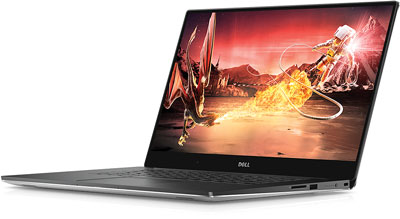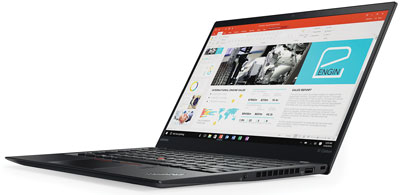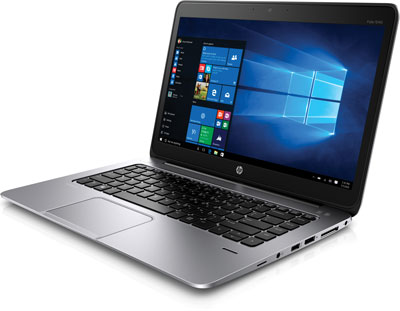In-Depth
3 Roadworthy Windows 10 Laptops
We tested laptops from Dell, HP and Lenovo aimed at business travelers who require performance and reliability.
- By Paul Ferrill
- 03/10/2017
There are plenty of laptops from which to choose that bring out the key features delivered in last year’s Windows 10 Anniversary Update. We spent time with PCs from Dell Inc., HP Inc. and Lenovo that are especially good choices for the business traveler with a need for a reliable and performant machine with the ability to handle most any task you can throw at it. The specific models tested were the Lenovo ThinkPad X1 Yoga, the latest Dell XPS 15 and the HP EliteBook 1040 G3.
All three are high-end systems from the top-three PC makers that sport touchscreens, which have become standard fare on most modern laptops. But only the Lenovo Yoga X1 comes with a pen and full support for the new Windows Ink features, which will be the cornerstone of the forthcoming Windows 10 Creators Update, slated for release in the coming weeks. For this roundup, the HP EliteBook 1040 G3 came with a fully patched and updated Windows 10 Anniversary Update edition while the Dell XPS 15 and Lenovo ThinkPad X1 Yoga were running the latest Windows Insider preview edition.
While none of the devices that were tested support Windows Hello facial recognition, the HP and Lenovo devices offer fingerprint capability to log in in lieu of passwords. The two are powered with Intel Core i7-6600U processors, 16GB of RAM and a 256GB SSD, while the Dell XPS 15 is equipped with an Intel Core i7-6700HQ CPU, 16GB of RAM and a 512GB NVMe disk.
These systems work well for developers looking to try out new features like Windows Containers. All three support that feature quite well, given the abundant amount of RAM and the SSDs. We also loaded Microsoft’s free Visual Studio Code to get a feel for typing on each keyboard. One thing we were looking for was the way each device handled palm rejection of the trackpad when typing. Some did better than others, but all were usable.

Dell XPS 15
The Dell XPS 15 laptop is one of the best-selling on the market and the largest of the three that were tested, coming in at 15 inches of screen real estate. It weighs between 3.9 lbs. and 4.4 lbs., depending on the battery and configuration. Speaking of the screen, it’s quite bright and fills the full width of the device with only a tiny border of unusable display. Its touchscreen can become very addictive once your usage patterns adapt to using your finger instead of the mouse. Still, some actions still work better with a mouse, so it becomes a matter of using the method with which you’re most comfortable.
Two full-size USB3 ports plus a single USB-C port give you lots of options for adding additional peripherals. A full-size HDMI plug plus SD card slot and headphone jack round out the available expansion ports. Dell offers a handy USB-C adapter with HDMI, VGA, USB3 and Ethernet ports that you can find on the Dell site for $74.99 as of this writing. This system had the CPU advantage over the other two, and it shows when running things like Windows Containers or multiple virtual machines in Hyper-V. It’s definitely a contender as a desktop replacement and isn’t too heavy or big to take on an airplane.
For the OS, we tested with several versions, concluding with Windows 10 Insider Preview 14986. One of the biggest changes introduced in Build 14942 is the removal of the Control Panel item on the Quick Link menu. Selecting the System item now takes you to the new Windows Settings app while the Anniversary Update Edition would open Control Panel | System and Security | System. The latest build has also replaced the Command prompt with Windows PowerShell.
It’s possible to access both the Control Panel and the Command Prompt by pressing the Windows Key and typing "Cont" or "Comm," and you should see both appear at the top of the search list.
To get a sense of how long all three systems will run on a single charge, we installed Battery Eater to gather benchmarks. With less-than-average workloads using reasonable power-saving settings, the Dell XPS 15 ran 8.8 hours, but with an optional second battery it can run considerably longer.

Lenovo ThinkPad Yoga X1
The Lenovo ThinkPad Yoga X1 was the only one of the three devices tested with full support for the new Windows Ink features and a fully rotating screen, which turns the device into a tablet. As with most ThinkPad devices, the Yoga X1 comes with both a trackpad and the ever-present TrackPoint red pointing device. For traditional ThinkPad users, you’ll find the three-buttons found on most computer mice just above the trackpad, which also has a clickable surface to simulate the left and right mouse buttons. The keyboard is extremely type-friendly, and you can disable the trackpad and use just the TrackPoint and buttons should you so choose.
Sporting a 14-inch OLED display, the ThinkPad Yoga X1 had the brightest screen of all three devices we tested. The screen completely rotates around flat against the bottom of the laptop so that the device, in effect, becomes a tablet. In fact, when you rotate the screen it will offer to switch to tablet mode, presenting a more touch-friendly interface. The pen is kept in a slot near the front-right corner of the keyboard side where it charges when not in use. With the pen, you can take full advantage of the new Windows Ink features delivered in the Anniversary Update Edition release like Screen Sketch. This handy tool turns whatever is currently showing on the screen into a drawing surface where you can annotate any way you’d like.
Hardware ports on the ThinkPad Yoga X1 include both full-sized HDMI and mini DisplayPort connectors, three USB 3.0 ports plus a Onelink+ docking port. On the rear of the laptop near one hinge is a compartment for a SIM card and SD card. My review unit did not come with the necessary WWAN card to test the LTE capabilities, but it is available as an option. It has a fingerprint reader for Windows Hello authentication. The ThinkPad Yoga X1 is the best choice if you’re looking for a full-featured convertible laptop with pen capabilities. The ThinkPad Yoga X1 ran 7.8 hours with the Battery Eater test.

HP EliteBook 1040 G3
HP’s commercial line of laptops has the definite look and feel of polished engineering. The EliteBook 1040 G3 is a 14-inch workhorse with many features that bridge the gap between a personal and professional laptop. One of those features aimed at the security-conscious business traveler comes in the form of a built-in privacy screen called HP Sure View. The mode is activated with the FN and F2 keys pressed simultaneously and reduces up to 95 percent of visible light outside of 35 degrees on either side of straight-on viewing.
Bang and Olufsen is a recognized name in the world of audio, and HP partnered with it for the sound system on the EliteBook 1040 G3. While this might sound like more of a consumer feature, it really comes into play for today’s conference calling and screen sharing. Coupled with a dual-array microphone, a special noise reduction software and Skype for Business certification, the EliteBook 1040 G3 is right at home hosting or participating in any conference call. Like the Lenovo ThinkPad Yoga X1, it comes with a fingerprint reader with full support for Windows Hello.
The HP unit was the only one of the three with both a proprietary expansion connector and a smart card reader. Other expansion ports include two USB 3.0 and one USB Type C, a full-sized HDMI connector plus a headphone jack. A model with a SIM card slot for 4G connectivity will be available early in 2017. The keyboard and trackpad on the EliteBook 1040 G3 reflect the high-end engineering you see in every aspect of the device. The layout is functional with cursor keys on the bottom right and frequently used keys like PgUp, PgDn, Home and End available on the right edge. For business users, these keys greatly enhance productivity when reading through a PDF file or with applications like Microsoft Word. The HP EliteBook 1040 G3 ran 6.4 hours with the Battery Eater test.
Observations
All three of these laptops work great with both the Windows Anniversary Update Edition and the latest Windows Insider preview releases. Each device has its own set of unique features for different use cases. Both Dell and Lenovo have already announced updates to the versions of these models for early 2017. You can expect to see them on or before the next release of Windows 10, called Creators Update, set for April 2017.
About the Author
Paul Ferrill, a Microsoft Cloud and Datacenter Management MVP, has a BS and MS in Electrical Engineering and has been writing in the computer trade press for over 25 years. He's also written three books including the most recent Microsoft Press title "Exam Ref 70-413 Designing and Implementing a Server Infrastructure (MCSE)" which he coauthored with his son.